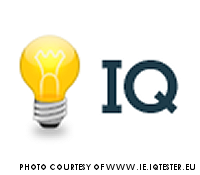
How do we, as humans, measure intelligence?
The memory and ability to spout off facts? Common sense? Both indicators of intelligence, but is there a “catch-all?”
Memory varies among humans, and is defined as the ability to store and recall information. Memory also ties in with the ability to spout off random facts and information, which allows people to seem “smart.”
True intelligence, however, is not shown by being able to remember random information or trivia. Memory is a component of the whole.
Part of the “catch-all” of intelligence is common sense. Common sense, or “street smarts,” is the ability to learn and adapt to situations without instructions, and solve problems that commonly occur during life.
Being unable to solve said problems shows a lack of common sense, or a lack of adaptability, which plays a large role in the evolution of the human race as a whole. Therefore, without common sense, humans could never have evolved to where they are today.
For example, if a child touches a hot stove, their reflex reaction is to pull away. After the fact, however, the child will learn that touching the hot stove causes pain, and won’t do it again, demonstrating adaptability.
A study conducted in 2012 attempted to prove that IQ tests are flawed and not the correct way to measure intelligence. The results proved that human intelligence is better measured through three distinct components: memory, reasoning and verbal skills. Each of these components corresponded to a distinct area of the brain, MRIs done during the study showed.
Memory, as explained above, is the ability to store and recall information, and was featured on the new test made during the study. Participants were asked to remember and repeat a sequence of numbers, testing their short-term memory.
Reasoning ties in with common sense, as it is a test of one’s mental adaptability and flexibility. For example, a question could ask “If box A is twice as big as box B, and box C is half as big as box A, which is bigger, C or B?”
Questions such as these test participants on their ability to manipulate information in their mind, a demonstration of mental flexibility.
Finally, verbal skills test participant’s logic and ability to understand statements. For example, a question could state that “A does not follow B, then show the letter A after the letter B. Is the statement true or false?”
Therefore, a “catch-all” can be found when one combines these 3 components, testing their memory, mental adaptability/flexibility and logical reasoning. Said test would hopefully better measure intelligence than the current IQ tests, which do not incorporate memory and mental flexibility.
Leave a Reply